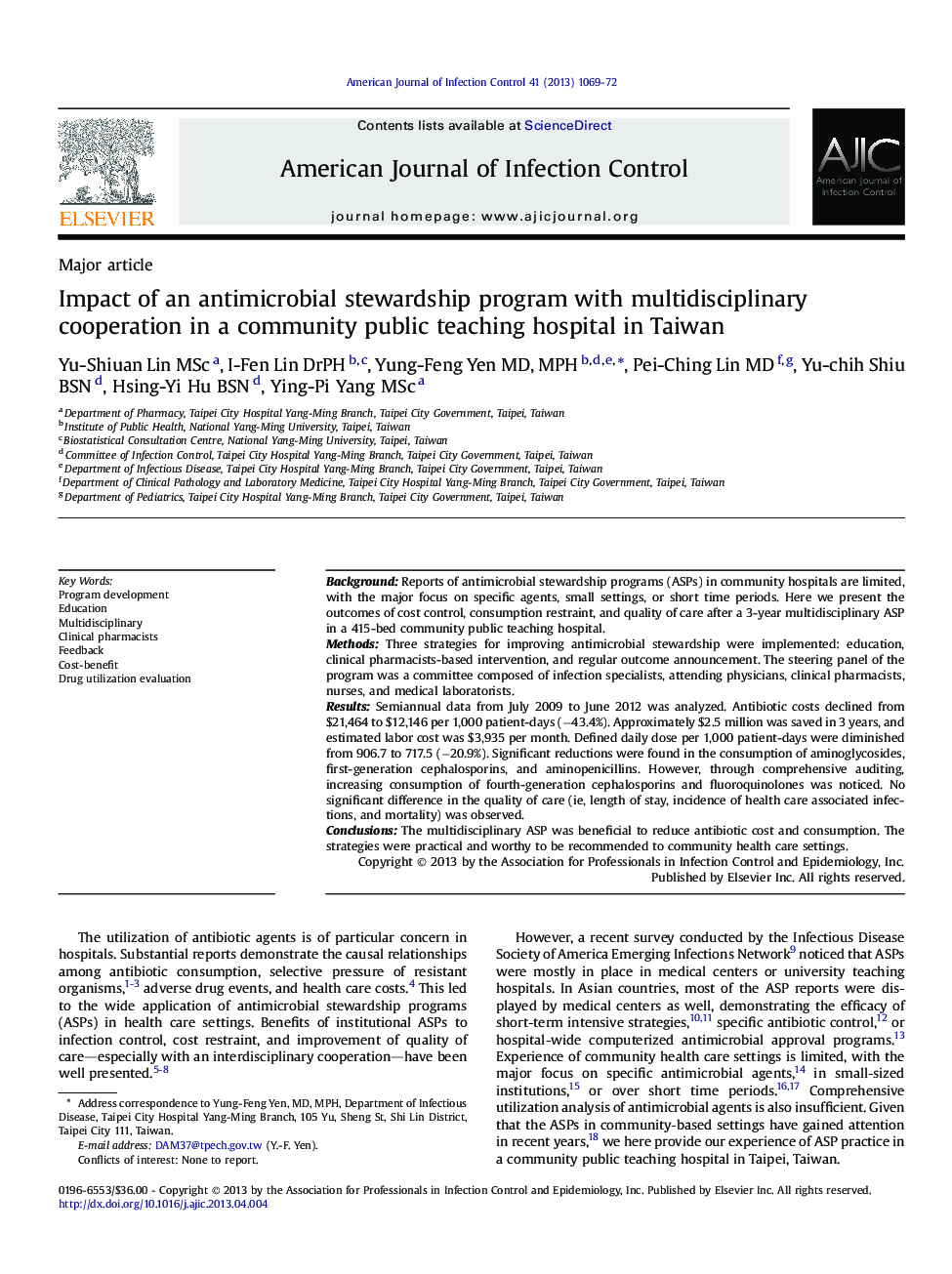| Article ID | Journal | Published Year | Pages | File Type |
|---|---|---|---|---|
| 2639556 | American Journal of Infection Control | 2013 | 4 Pages |
BackgroundReports of antimicrobial stewardship programs (ASPs) in community hospitals are limited, with the major focus on specific agents, small settings, or short time periods. Here we present the outcomes of cost control, consumption restraint, and quality of care after a 3-year multidisciplinary ASP in a 415-bed community public teaching hospital.MethodsThree strategies for improving antimicrobial stewardship were implemented: education, clinical pharmacists-based intervention, and regular outcome announcement. The steering panel of the program was a committee composed of infection specialists, attending physicians, clinical pharmacists, nurses, and medical laboratorists.ResultsSemiannual data from July 2009 to June 2012 was analyzed. Antibiotic costs declined from $21,464 to $12,146 per 1,000 patient-days (−43.4%). Approximately $2.5 million was saved in 3 years, and estimated labor cost was $3,935 per month. Defined daily dose per 1,000 patient-days were diminished from 906.7 to 717.5 (−20.9%). Significant reductions were found in the consumption of aminoglycosides, first-generation cephalosporins, and aminopenicillins. However, through comprehensive auditing, increasing consumption of fourth-generation cephalosporins and fluoroquinolones was noticed. No significant difference in the quality of care (ie, length of stay, incidence of health care associated infections, and mortality) was observed.ConclusionsThe multidisciplinary ASP was beneficial to reduce antibiotic cost and consumption. The strategies were practical and worthy to be recommended to community health care settings.
